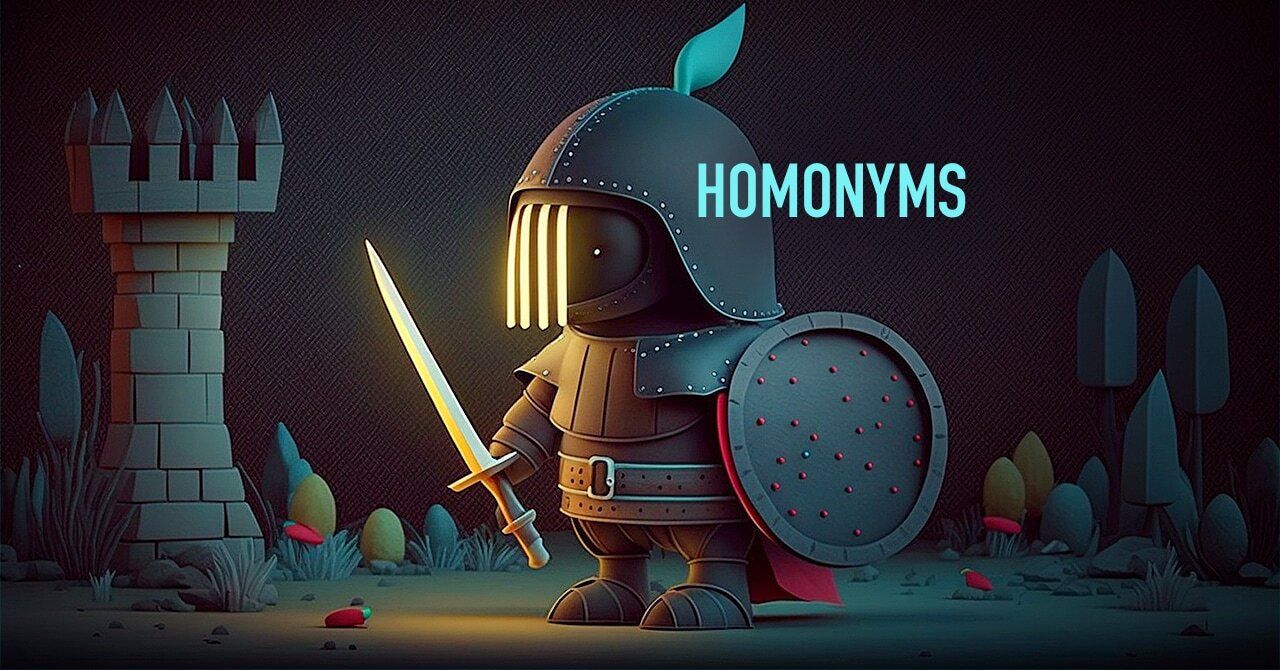
What are Homonyms, Homographs & Homophones?
Homonyms having identical sounds are called homophones.

Get a FREE guide!
Want to sound like a native English speaker?
Get our free PDF with top tips that work.

Check your email!
In this article, I will explain it nicely and properly to you because I know it is a lot of information. Plus, there is a couple of words that might be completely strange and new to you.
What are homonyms?
It comes from a Greek origin which means “having an identical name.”
It’s got subdivisions called homophones and homographs. Usually, they can be explained as words that are identical, no matter how it’s pronounced.
Homonyms having identical sounds are called homophones. It is a combination of two Greek words—“homos” means “identical,” whereas “phone” means “sound.” Terms are either exact or non-identical.
Here are a few examples:
knight – night,
know – no.
What are homographs?
Homonyms, being spelled identical, are named homographs. It is a combination of two Greek words—“homos” means “identical,” whereas “graph” means “put down on paper.” The words are written identically while having non-identical explanations. The pronunciations may also differ from each other.
Here are a few examples of homographs: bass—a type of fish or bass—low, deep voice; bat—a type of animal or bat—sports equipment
Interesting facts about homonyms
They are sometimes very mystifying and difficult to grasp at first, but when you hear them being spoken aloud or read in the sentence context, you will quickly realize which word is intended.
Though it is possible, homonyms can be both homographs and homophones.
Don’t get them confused. Only homophones can cause writing errors because homographs are identical words.
Homonyms (for example, “course” and “coarse”) and near homonyms (like “affect” and “effect”) are most of the time accountable for writing errors. Identifying the errors will lower the need to look them up in a dictionary.
Fun fact: using homonyms in titles can make it very excitable and most definitely memorable.
More fun facts: homonyms have their own sense of humour. Homographs are the most common in jokes. Puns are simply jokes that exploit homonyms.
Here are 5 tips for teaching homonyms
Form sentences with word cards using pictures instead of using words.
Word maps can be used to prompt your students. By using homonyms, students can give you examples of how they could be used. Create displays for the classroom, and use big papers with identical words that hold various meanings.
It can be an engaging activity using videos to study homonyms.
By teaching individual homonyms, you have to use them in full sentences and explain the differences, thus will help avoid confusion.
Interesting facts
Some accounts argue that vagueness is actually a design trademark of human communication systems by allowing languages to reuse ideal term formation for various meanings.
Finding that the unnatural verbal exhibits higher upper bounds on homophony than the real equal. It is even more likely to be found among short, expressively word structures in the vagueness than in real verbal. The results provide that homophony in real languages is indirectly selected rather than emerges as a natural outcome of other trademarks of a language.
It may even be selected against real languages, constructing vocabulary that better keeps to other demands of people who need to use them.
















